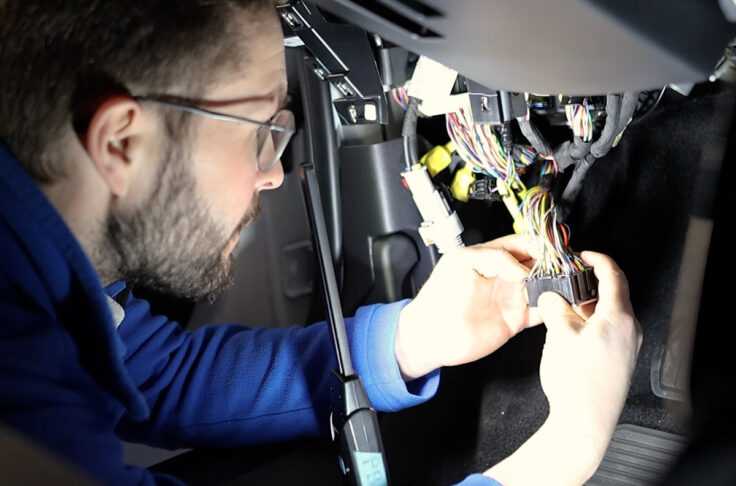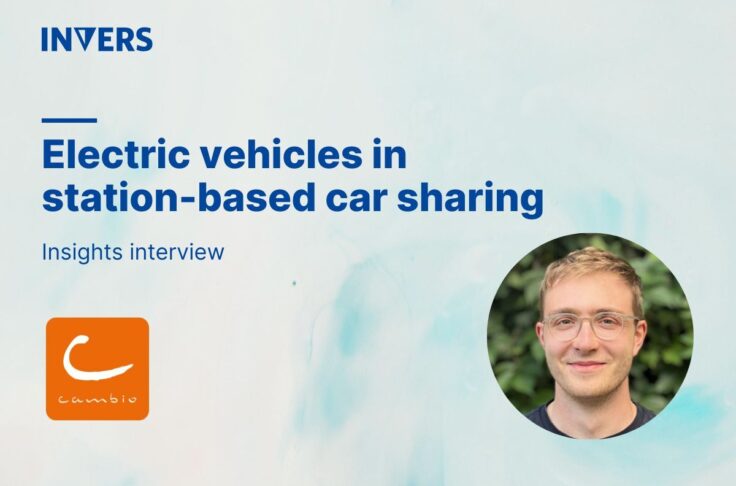
SHARE NOW
SHARE NOW proves collaboration is stronger than competition
SHARE NOW is a prime example of how collaboration can be more powerful than competition. After almost a decade of rivalry, SHARE NOW was born as a joint venture between two dominant OEMs in Europe – Daimler and BMW. Each OEM had created their own free-floating carsharing services. Car2go and DriveNow both helped grow the carsharing market. Now under one brand, SHARE NOW operates over 11,000 vehicles in 8 countries across Europe.
We sat down with Slavko Bevanda, CPO and CTO of SHARE NOW, to get the inside scoop. How has SHARE NOW become a leading player in the carsharing space and what role plays technology in paving the way towards future growth? Slavko started working at Daimler in 2002. As someone who has been part of the carsharing journey since the beginning, he has first-hand experience on what makes carsharing successful.

What are some of the biggest challenges you overcame during the merger of car2go and DriveNow to form SHARE NOW? What does the journey ahead look like?
Mergers are always a challenge. Bringing different cultures, management priorities, values, and leadership styles together requires strategic navigation to successfully bridge two companies. car2go and DriveNow were originally competitors. They ran as two proud and successful companies with strong market positions. Both companies had their own approach to operating in a city. During the merger, we had to make sure that key knowledge was not lost during transition. There was also the challenge of relocating the team to one location, since car2go’s headquarters was in Stuttgart and DriveNow’s headquarters in Munich.
Another challenge was managing two different tech stacks. We needed to figure out how to consolidate all operations under one overarching technological umbrella. We had an ambitious timeline in place to bring together the technology, membership base, processes, and more. We wanted to ensure the SHARE NOW brand kicked off with a positive customer experience and continued to work seamlessly. We were ambitious with the timelines, but the team was motivated and worked hard to overcome these challenges. With the right focus, team spirit, and attitude, I believe there is nothing one cannot achieve. We also partnered with great suppliers who helped facilitate this process. After nine months of hard work, we were proud to get SHARE NOW operational in cities worldwide.
Regarding the journey ahead, we see continuous improvement of our services through introducing new tech, resulting in higher availability rates and greater stability. We also want to add variability in rental options. Offering new car models and day packages, as well as expanding use cases, franchise partners, new locations, and partner models.
What sets SHARE NOW apart from its competitors and has made it successful?
car2go was one of the first players in the carsharing space, pioneering free-floating carsharing in both Europe and North America. This allowed the team to gain unique experience in understanding customer needs. Especially since people were not familiar with carsharing. Since launching in 2008, we have made great progress in developing our mobility services, along with the products that power those services. We made sure to continuously improve upon all aspects of the user experience. From speed to accessing the car to enhancing features on the app-based process, which we also pioneered.
SHARE NOW’s focus is on bringing easy, convenient, fast, and reliable service to the cities we serve. Throughout Europe, each market has its own unique consumer mobility behaviour. Our broad approach to bringing carsharing to cities allows us to adapt to different regions. For example, in Copenhagen, we collaborated with partners to offer a franchise product. It allowed us to transfer our industry knowledge and experience to others who can truly tailor to the local market’s operational needs. On the other hand, North America’s market is much bigger and more fragmented with numerous individual use cases. That is why we decided to move out of that market and focus solely on Europe.
How does SHARE NOW’s tech stack contribute to growth and success?
With our tech stack, we can scale globally in an instant. In the backend, each city’s operations run as microservices, meaning we have 250 microservices running at once. Our tech runs completely on the cloud using Amazon Web Services. This enables us to operate on a higher level of efficiency in terms of deployment and frequency of updates. It means that regardless of where we scale to, our customers will experience the same speed to unlock the vehicle, despite the fact that the architecture running in the background is in Europe. There is no decreased latency or decreased speed. Our tech is set-up with international use in mind, allowing us to grow and scale to any part of the world.
Reliable and safe communication is also a critical aspect in our tech. Every day and every week, there are people trying to steal our assets or fraudulently misuse our service. We need to constantly take preventative measures to make sure no one can hack into our system. Setting up secure communications to the car and defining countermeasures are top of mind. It allows us to react to security issues quickly. These measures also highlight how we can confidently manage large data volumes and ensure a seamless user experience across the board.

How do you decide what new vehicles to add to the fleet? What are the obstacles?
The shareholders at Daimler and BMW are fairly open to the types of vehicles we add. Throughout the companies, there is deep knowledge about cars. In general, we need to look at how the car is perceived in the market and how it reflects the brand we represent. Afterwards, we need to see how the vehicle can be connected with our app so customers can reserve and unlock it. Some OEMs share their API, but not all do so. Because we need a safe and secure way to open and communicate with the car, it is key to have a strong relationship with the OEM. In order to add a new vehicle type to our fleet, we also need to make sure we can read the fuel levels reliably. If this cannot be done at the OEM level, then we’ll look at IoT solutions to make this possible.
What made you decide to partner with INVERS and use our CloudBoxx?
When we evaluate new tech vendors to partner with, we want to make sure a good long-term relationship can be built. We look for experience, honesty, transparency, and reliability. INVERS met all these criteria. INVERS has the competency and ability to provide the robust and proven IoT solution we need, along with the capacity to mitigate any issues in a reasonable timeframe. In addition, the CloudBoxx has the capability to deal with poor connectivity situations, such as when our cars are in an underground parkade. CloudBoxx is already integrated in so many vehicle types. We knew it could work with other vehicles we would want to add to our fleet as well in the future.
How do you see the shared mobility space evolving?
The market is currently fragmented and there is a need to integrate all these different services together. Customers need a way to easily access all these mobility options from a bigger platform. At the same time, the mobility experience and journey need to be customized to each individual. From personal welcome messages to pre-adjusted seat and radio settings to optimized routing. There are numerous opportunities to give customers a VIP experience when using shared mobility.
What advice do you have for new mobility businesses getting started in this space?
I worked for Daimler for 18 years, holding different responsibilities in different departments, like controlling and research and development. I was able to see how the business was run, how to manage IoT solutions, and how to work as a small team within a big company. With this experience, I see the most important area to focus on in your own shared mobility business is to fully understand your customer’s needs and how you can meet those needs. If you are expanding to new markets, take into consideration any cultural differences you may face. Make sure you build or choose a tech stack that enables flexibility to adapt and scale as needed, based on the market conditions and user requirements. When it comes to your team setup, build trust, define collective goals and empower your team. Together you can turn your mobility vision into reality.


